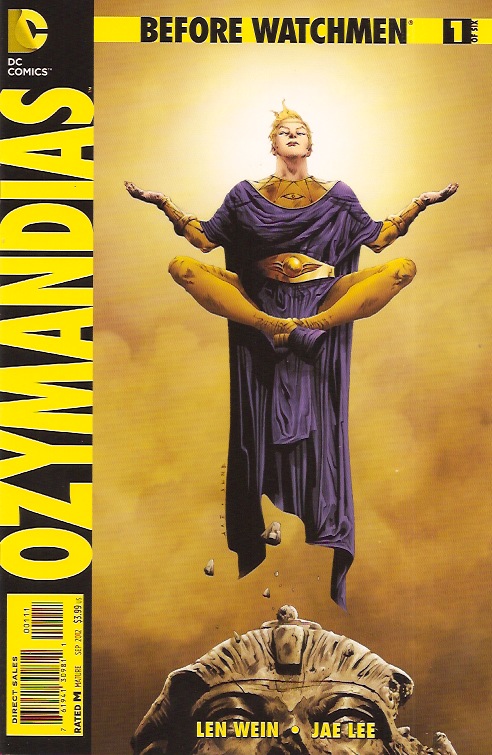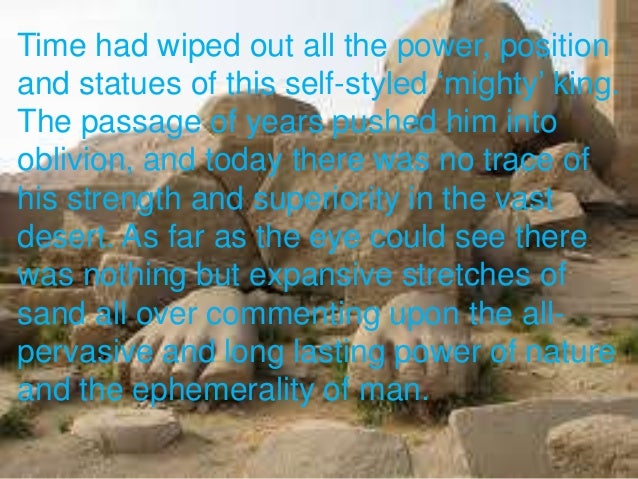

Both 'boundless and bare' and 'the lone and level sands' use alliteration to remain memorable - as does the sneer of 'cold command'. Shelley coined several other powerful phrases in this poem and the final lines have entered the language and have been used for the titles of several books and games. It could imply that his subsequent obscurity was a punishment from God - a subject that Shelley considered in several of his other poems. Ozymandias calls himself 'king of kings' - a phrase taken from Biblical language - which smacks somewhat of arrogant pride. The poem is written in iambic pentameter, but there are several variations in the pattern, including reversed first feet ('Nothing beside remains' and 'Tell that its sculptor…'). In this sonnet, the first part sets up the frame narrative and then describes the statue and the second part ironically relates the king's words and adds the final description of the desert setting. Most sonnets break into two parts: an 'octet' (the first eight lines) and a 'sextet' (the last six lines), with the second part commenting on the first. The poem is a sonnet - a fourteen-line single stanza form that originated in Italian love poetry and that was popularised in England by Shakespeare. The lone and level sands stretch far away.

Of that colossal wreck, boundless and bare, Look on my works, ye Mighty, and despair!'

The hand that mocked them and the heart that fed Which yet survive, stamp'd on these lifeless things, Tell that its sculptor well those passions read Half-sunk, a shatter'd visage lies, whose frownĪnd wrinkled lip and sneer of cold command Who said: Two vast and trunkless legs of stone The description of the statue is a meditation on the fragility of human power and on the effects of time. Shelley's poem imagines a meeting between the narrator and a 'traveller' who describes a ruined statue he - or she - saw in the middle of a desert somewhere.


 0 kommentar(er)
0 kommentar(er)
